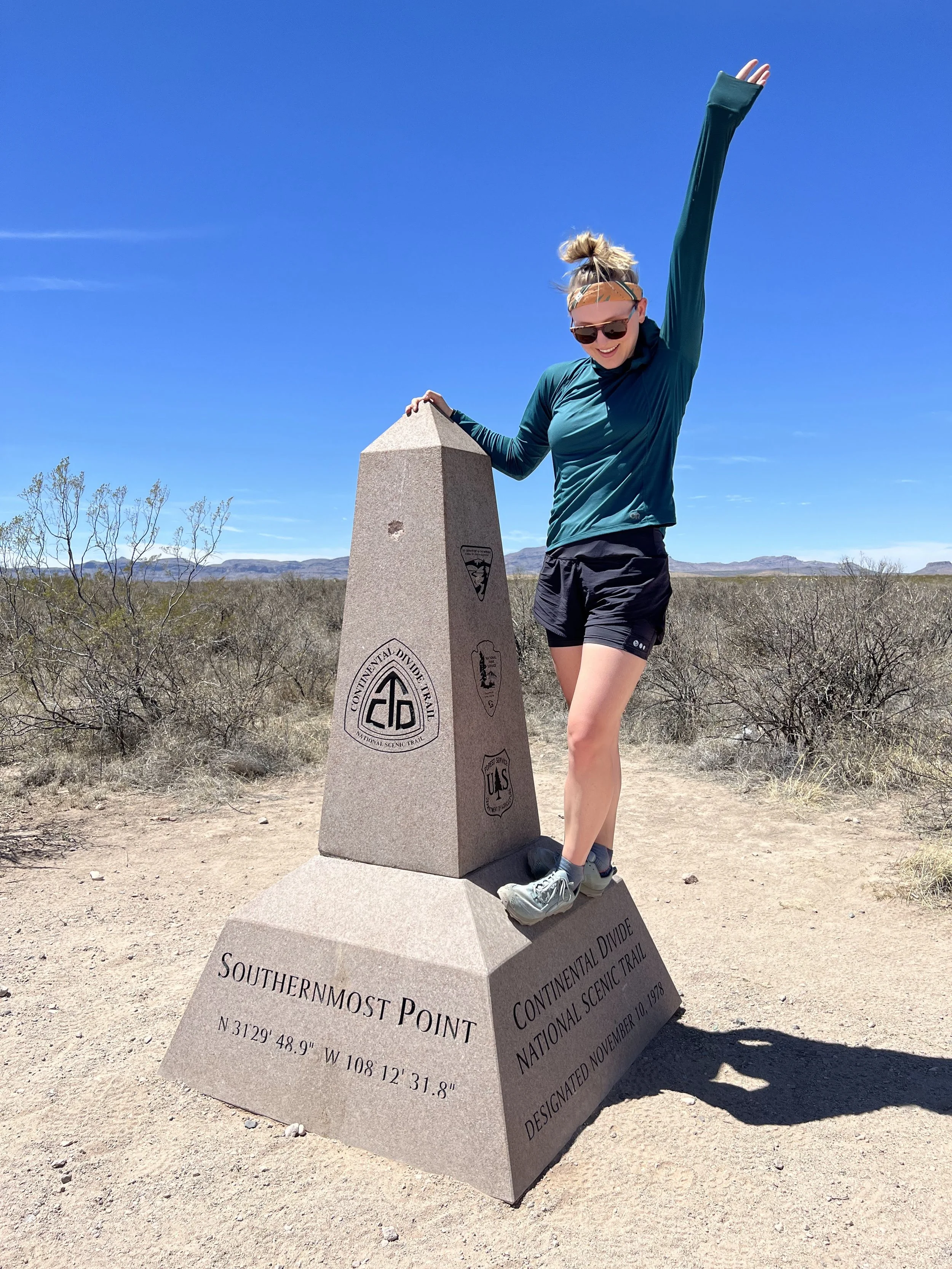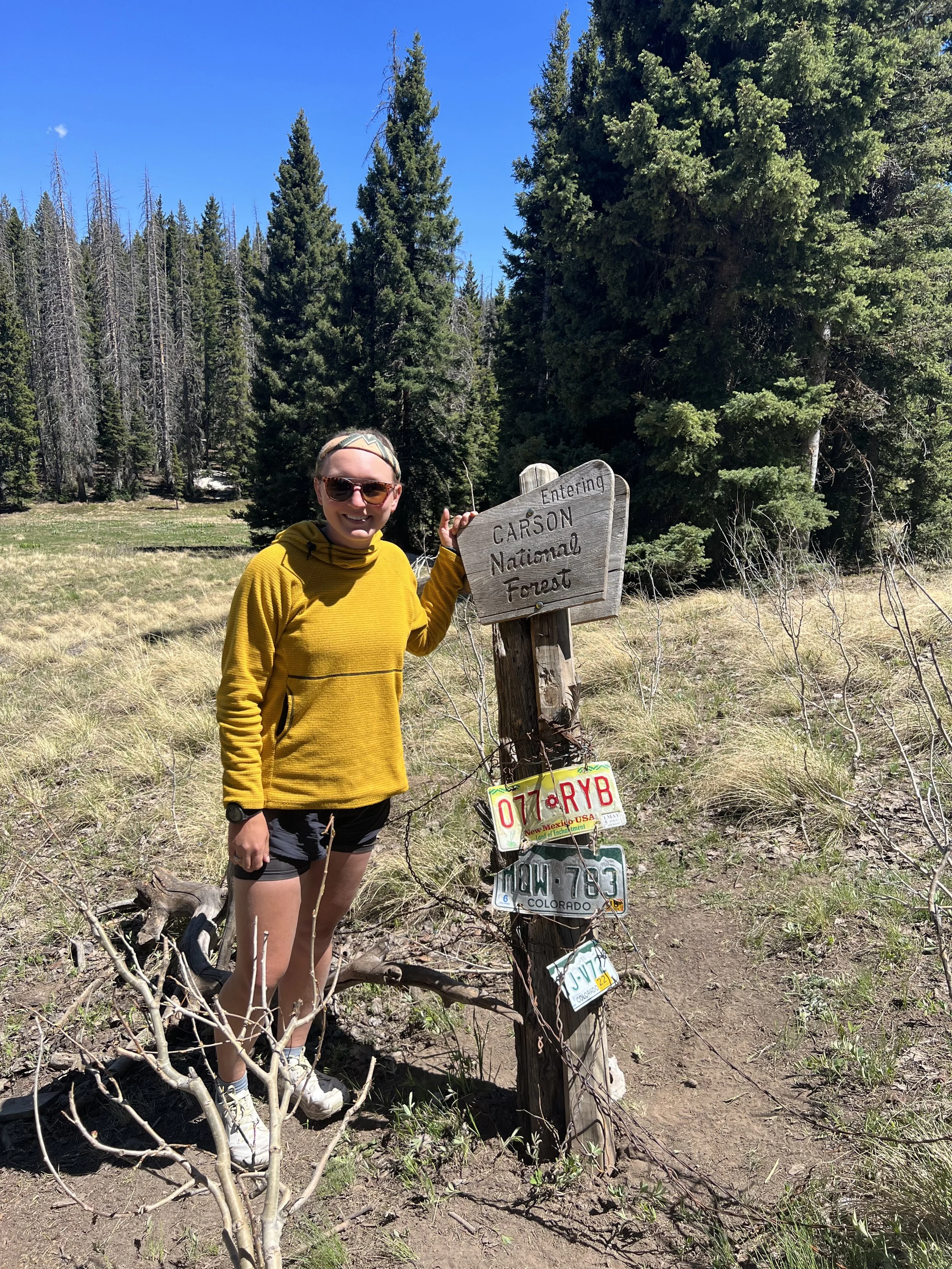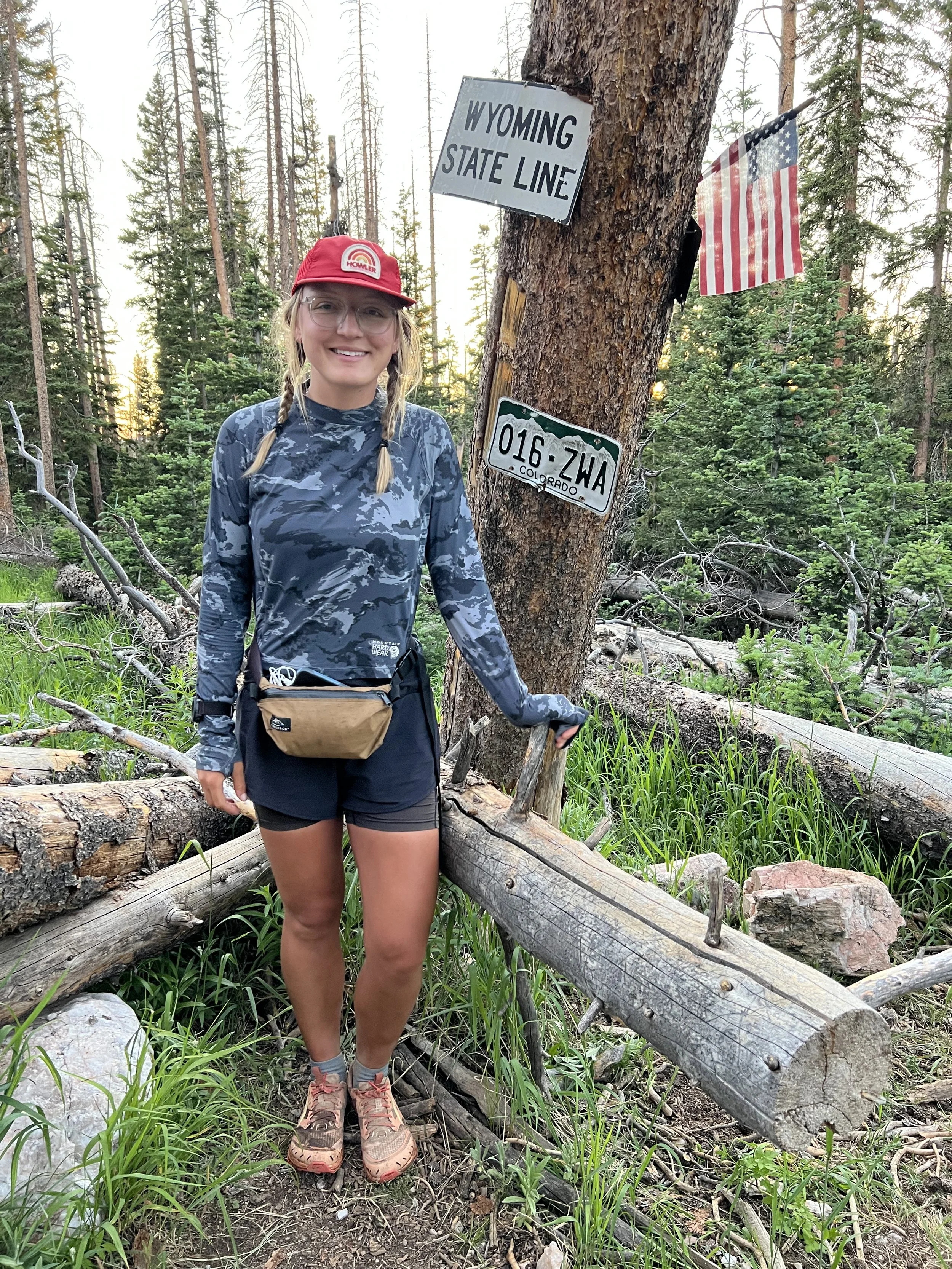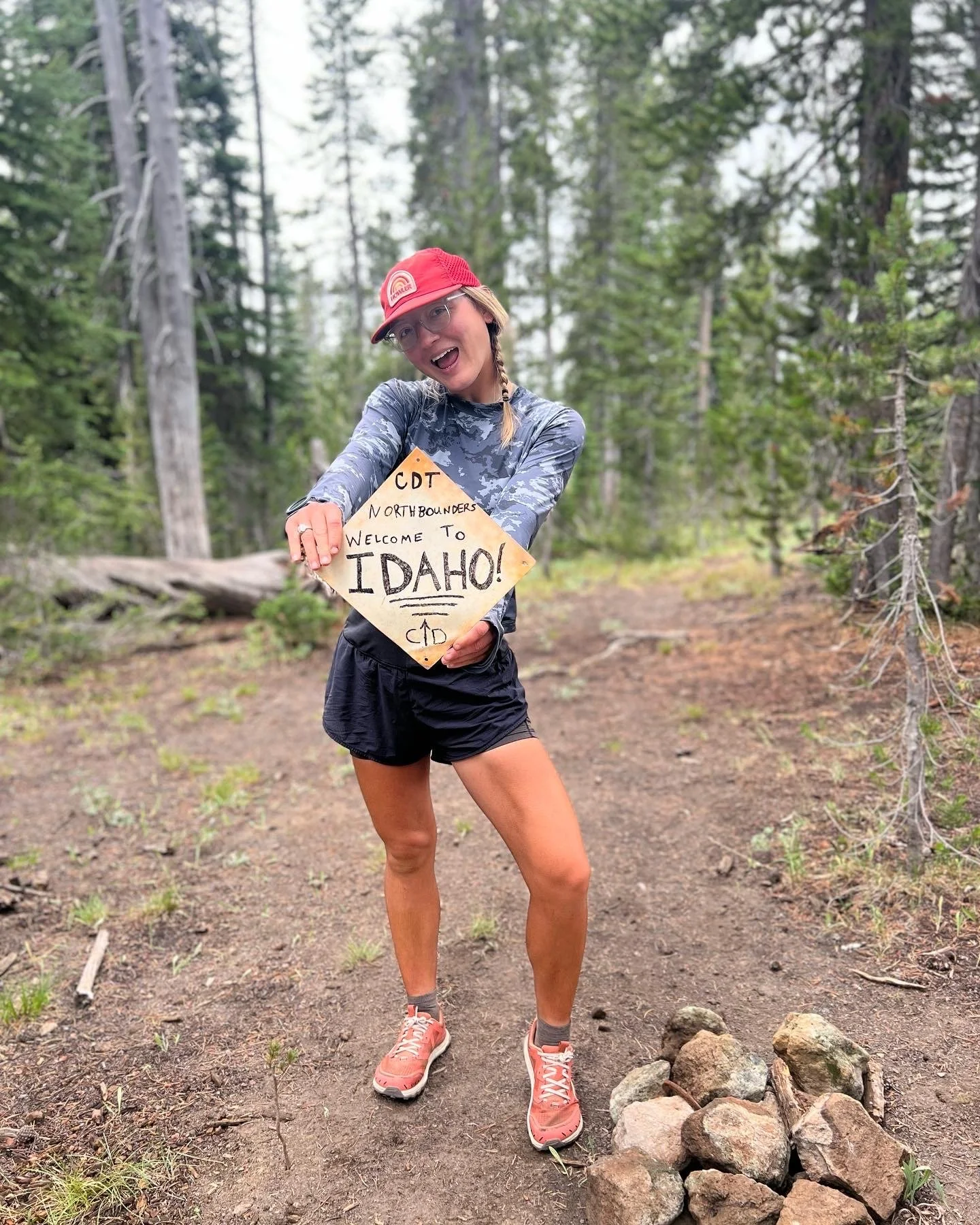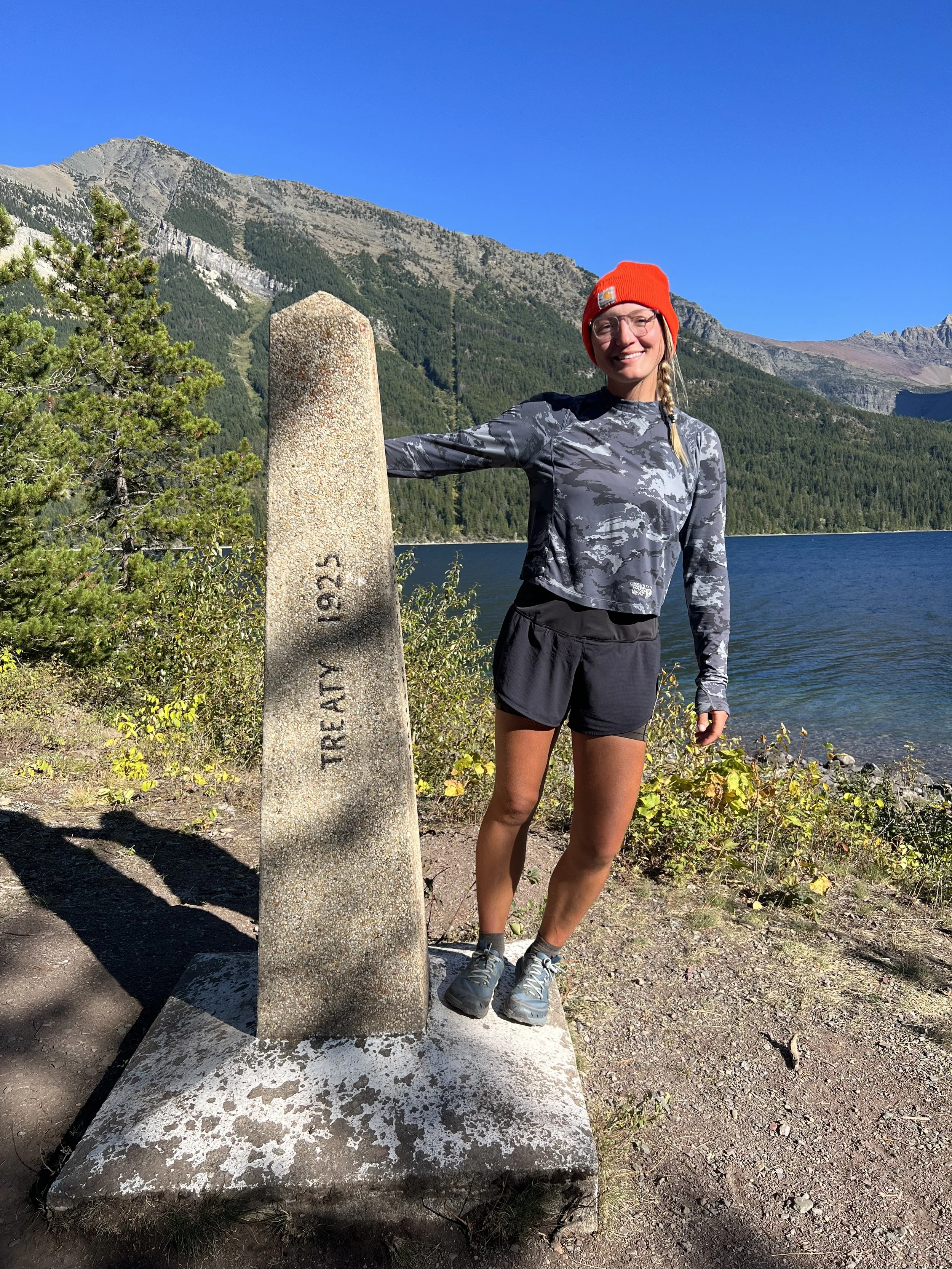How Much Does it Cost to Thru-Hike?
How much does it cost to thru-hike? EXACTLY what I spent on the CDT.
Helllloo! My name is Elise (or Sauce) and in 2022 I thru-hiked the Continental Divide Trail (CDT). I’m also a huge fan of financial independence and financial transparency, so I want to answer the question “How much does it cost to thru-hike?” by telling you EXACTLY how much I spent on the CDT.
Before I dive into it I wanna take a moment to give some important context and a quick overview of how I’m breaking up the information.
As you may (or may not) know, there are 5 states on the CDT, but i’m dividing things up into 4 “sections” for this analysis — New Mexico, Colorado, Wyoming & Idatana, Montanaho Montidaho — whatever you want to call it (the trail goes back and forth between Montana and Idaho for quite awhile so it’s a bit easier logistically to just group them together).
If you’re more of a video person, here’s a video I made of all the data I’m outlining below
THEN for each section, I broke up my spending into 5 major categories —
1) Resupply
The food we bought in town to eat during our next section of trail (and sometimes also groceries we bought to eat while in town).
2)Food/Beverage
This is any money I spent going out to eat in town, at coffee shops, or at the bar (there were more bar tabs sprinkled in there than I’d like to admit). Shout out to Hole in the wall in Rawlins…#iykyk.
3) Lodging
This encompasses what I paid to stay (and sometimes camp) in towns.
4)Gear Replacement
This category includes what I paid to REPLACE or ADD gear on trail (this is not including any of my upfront gear costs).
5) Miscellaneous
Just what it sounds like — everything else, including any recurring bills I had at home (which were minimal by design).
I know you just want the numbers and I will give them ALL to you, but bear with me for some important context before I fully dive in.
First of all, I spent over two years living very frugally and well below my means to save for this thru-hike. By the time I finished saving, I had about $13,000 saved knowing that I wanted a pretty good cushion to come back to after trail, but I did not plan to spend that much.
Now you may be thinking, “wow that’s a lot of money, how can you afford that?” And I want to acknowledge things that allow me to save that kind of money relatively quickly. I don’t have kids, I don’t have debt, I don’t have pets, and I rented my home, so I had very little ongoing expenses once I was on trail. So my situation is obviously different and a lot more flexible than some.
Another factor that affected my spending on this hike is that I hiked this trail with my fiance. This meant I always had someone built in to split lodging with, which is huge. We even often split larger rooms with other people to get lodging costs down even further. If you’re okay with it, there are usually other hikers around willing to do the same.
Another thing to know about me is I love to take zeroes on trail (which means staying in town for a full day and usually two nights) and I took a total of 22 zeroes on this trail.
Obviously, not everyone hikes this way so it’s very possible you could spend less if you spend less time in town, or more depending how fancy you like to get (I don’t judge, live it up hiker trash). I view my thru-hikes like a hard earned vacation. While I don’t go totally over the top, I also don’t deprive myself of much (within reason) when I’m in town.
FINALLY, there were a few bulk, huge purchases that I’m keeping separate from my ON trail total, but will disclose now (since they’re still pertinent to how much I spent on my thru-hike in total).
I spent $674 on catastrophic travel insurance through World Nomads before I left (shoutout to my fellow over 26 year olds who can’t ride on the parent’s coattails anymore).
I spent $451 on 6 months of car insurance premiums while I was on trail (due to several reasons, this was the best option for my situation).
If I went out right now, in 2022 and bought all the gear I carried on trail (without shopping ANY sales), it would cost $3,848.
Now, that number made my stomach drop. This is definitely more than what I actually spent because I accumulated this gear over several years (much has gone up in price since I bought it, holy inflation), and I almost refuse to buy things if they’re not on sale. Some of my gear was gifted to me, some I did work in exchange for, etc. But for the sake of simplicity, I wanted to give an idea of what you might expect to pay for a similar gear list to mine if you are starting from absolute scratch.
SO before I even stepped foot on trail I “spent” roughly $4,973 on my thru-hike.
It’s not a commercial space flight but it certainly isn’t cheap either.
ALRIGHT, with that out of the way let’s dive into how much I spent ON TRAIL on my thru-hike of the CDT by STATE.
NEW MEXICO:
777 miles + 10 towns + 5 zeroes = $2,489.58 is how much it cost to thru-hike through New Mexico.
Hiking over 700 miles, with stops in roughly 10 towns, and taking 5 zeroes, I spent a total of $2,489.58 in New Mexico.
Spoiler — this was my most expensive state.
Let’s dive into some specifics, so we can get an idea as to why.
I’m counting before the southern terminus as a town and our entire “return” to New Mexico as 1 town. We had to skip 150 miles when we were going north due to the national forests closing, and we came back for that section after we finished at the northern terminus. These extra stops and traveling added up even though we had a ton of help from family.
I spent the most in Cuba at $444.43 BECAUSE this is where we got off for a week when the forests closed and I went on some REI Runs, so it’s a little skewed.
I spent the least at Doc Campbell’s — that “town” stop cost just $40 (I use quotes because it’s really just a small general store in the middle of the Gila National Forest). This is because we camped as our lodging (the only option) and sent a box as our resupply (there was actually enough food there to do a full resupply, but I heard it was quite pricey from other hikers).
My highest spending category was gear replacement/additions at $663.84. I think it’s pretty common for this category to be high at the start of a thru-hike when you’re realizing things you might need that you haven’t picked up or gear that you brought with you that may not have as much life in it as you thought.
This category was MUCH lower in every other section, and mostly just accounted for shoes, fuel and some smaller replacements.
My lowest spending category was my miscellaneous expenses — $201.66, which included my Garmin inReach subscription, a New Mexico Land Use permit, some post office trips and several other random odds and ends.
Notable splurges:
I spent almost $200 in a single trip to REI on new shoes and a sleeping bag liner.
Notable saves:
My fiance’s mom took us to the southern terminus which saved us a ton on lodging and shuttle costs to get to the border (although after that experience, I kind of recommend the shuttle).
Here’s a quick list of what I spent in each town:
Southern Terminus – $410.59
Lordsburg – $363.44
Silver City – $193.21
Doc Campbell’s – $40
Pie Town – $42.97
Reserve – $359.95
Grants – $264.27
Cuba – $444.43
Chama – $177.63
Return to NM – $193.09
And in each category:
Resupply – $561.88
Food/Bev – $654.88
Lodging -$407.32
Gear Replacement – $663.84
Misc. – $201.66
So that’s how the New Mexico section of my CDT thru-hike cost $2,489.58.
COLORADO:
700+ Miles + 10 towns + 9 zeroes = $2,032.38 is how much it cost to thru-hike through Colorado.
Colorado is also over 700 miles long, we stopped in 10 towns yet again (do you see a pattern?) and took 9 zeroes (we have friends here, okay?) I spent a total of $2,032.38.
Colorado is probably the section most people will hype up as the most expensive on the CDT because of all the touristy mountain towns (and there are a lot, especially in Central Colorado). And while this is true, I happen to live in Colorado, so I had a lot of help in this state and partially because of that, spent less than I did in New Mexico.
So let’s dive into the dirty details of the $2,032.28 I spent on the CDT in Colorado.
I spent the most in Pagosa Springs. While I was in Pagosa, I spent $488.68. After our first week of hiking in Colorado the snow and the wind really threw us for a loop so we decided to try and let the snow melt and wind die down while we waited it out in town — so we spent THREE zeroes in Pagosa. The town already isn’t cheap and staying that long didn’t help. We split airbnb’s with other hikers but it was still quite the bill for one stop.
I spent the least in Twin Lakes ($83.87). We only intended to partially supplement a resupply here so we didn’t do a full one (and that’s what I’d recommend for the record, it’s kind of slim pickings). Kid (my fiance) also somehow talked an airbnb owner into letting four of us stay at his place for cash under the table. Overall, it made for a pretty cheap stop.
My highest spending category in Colorado was food and beverage at $737.15, followed by resupplies at $469.64. So the cheapest way to hike through Colorado would be to not need to eat…I guess. I think most people could also spend a lot on lodging in Colorado. But like I said, we luckily had support and purposely opted for cheaper options since we knew in some places we’d have no choice but to splurge. I’d say this is a good philosophy in general, opt for the cheapest option always because you never know when you’ll be stuck somewhere with no option but to spend A LOT.
My lowest spending category was gear replacement at $214.12. This included a new pair of shoes, a new hiking shirt, and a new hat!
Notables splurges:
Spending 3 days in Pagosa wasn’t cheap, but it was worth it for our mentality moving forward on trail. We spent the vast majority of our lodging expenses in Colorado in Pagosa.
Notable saves:
Like I said, we had some awesome support from friends and family in Colorado which kept our overall lodging costs down significantly. We didn’t pay to stay in Lake City, Breckenridge, Grand Lake or Steamboat! We stayed relatively cheaply in Winter Park, Twin Lakes, Buena Vista and Salida.
Here’s a quick list of what I spent in each town:
Pagosa Springs – $488.68
Lake City – $300.11
Salida $121.04
Buena Vista – $193.49
Twin Lakes $83.87
Breck/Copper – $317.57
Winter Park – $219.80
Grand Lake – $191.78
Steamboat Springs – $115.94
And in each category:
Resupply – $469.94
Food/Bev. – $737.15
Lodging – $326.93
Gear Replacement – $214.12
Misc. – $226.47
So the Colorado section of my CDT thru-hike cost $2,032.38.
WYOMING:
500ish miles + 4 towns + 3 Zeroes = $1,147.58 is how much it cost to thru-hike through Wyoming.
In the shortest section at just over 500+ miles, with 4 towns and 3 zeroes I spent $1,147.58. Wyoming is the shortest section of the CDT and at this point we were moving. We also chose to send it on a nine day stretch through the Wind River Range and skip the town of Pinedale. All these factors (including Wyoming just generally being a lower cost of living state) made this my cheapest section of trail.
I spent the most money BY FAR in Dubois (pronounced “Due boys”). I spent $504.04 in Dubois (WOOF). If you don’t know Dubois is a gateway town to Yellowstone, so it’s very touristy, and at the height of the summer, lodging was not cheap. We zeroed here when we probably shouldn’t have, and I also attributed the money I spent in the Yellowstone villages to Dubois. So there are a few extra lunches in that total than I truly ate in that town.
I spent the least in Riverside/Encampment (two towns that are right next to each other right across the Wyoming border). I spent $127.47 in this town, most of which was at one of the two total restaurants in town. Notable mention to Encampment for it also being the longest hitch of my life. I waited over three hours for a ride, so if I valued my time this would actually be a very expensive stop.
My highest spending category was again food/bev at $405.15. I’ll be the first to admit that town food is my biggest weakness.
My lowest spending category was miscellaneous at a total of $102.90 which mostly consisted of post office runs and my Yellowstone permits.
Notables splurges:
Staying in Dubois two nights and also taking an unexpected zero in Rawlins because I had too much fun at the Hole in the Wall and was too hungover to leave the day we were supposed to.
Notable saves:
Skipping Pinedale undoubtedly saved us money and time (and we sort of accidentally saved on resupply by bumming off people on the high route when we ran out of food, a story for a different day). Josh’s parents also gifted us a hotel stay in Lander.
Here’s a quick list of what I spent in each town:
Riverside/Encampment – $127.47
Rawlins – $255.60
Lander – $260.47
Dubois – $504.04
And in each category:
Resupply – $155.95
Food/Bev. – $405.15
Lodging – $302.28
Gear Replacement – $181.30
Misc. – $102.90
So the Wyoming section of my CDT thru-hike cost $1,147.58.
IDAHO/MONTANA:
800ish miles + 9 towns + 5 zeroes = $2,212.36 is how much it cost to thru-hike through Idaho & Montana.
Over 800ish miles, visiting 9 towns and taking 5 zeroes, I spent a total of $2,212.36 in Idaho/Montana.
I did include Waterton (in Canada), our final town, in this roundup. I also think it’s worth noting at some point about half way through we realized we were on time to make it to Canada and decided to savor the experience by zeroing in every remaining town.
I spent the most in West Yellowstone with a whopping total of $367.55. West Yellowstone is another touristy, expensive gateway to Yellowstone. We didn’t even zero here and it was still really expensive. We did buy two resupplies though so we could send one ahead.
I spent the least in Lima, Montana — a whopping total of $85.47. The motel was out of space so we camped, showered and laundered for $10. We sent a resupply box and spent most of the $80 on eating and shuttles to and from the trail.
My highest spending category was once again food and bev at $812.29. I justify this ginormous number by remembering this section was about 800 miles long so really I only spent $1 on food per mile….actually, I’m not sure that makes it any better.
My lowest spending category was gear replacement at $75.99. I think I only bought shoes and we had a sweet hookup who gave us half off Altras.
Notables splurges:
Deciding to zero in every town after Darby. It was worth every penny.
Notable saves:
We split almost every stay with our trail family, which was great and my mom came and got us in Waterton which helped SO MUCH with transportation costs back to the states.
Here’s a quick list of what I spent in each town:
West Yellowstone – $367.55
Lima – $85.47
Leadore – $153.62
Darby – $307.43
Anaconda – $254.18
Helena – $277.11
Augusta – $255.19
East Glacier – $377.94
Waterton – $173.87
And in each category:
Resupply – $580.60
Food/Bev. – $812.29
Lodging – $525.55
Gear Replacement – $75.99
Misc. – $217.93
So the Idaho/Montan section of my CDT Thru-hike cost $2,212.36.
SUMMARY:
SO If you’ve been doing the math, you already know how much I spent total on my thru-hike of the CDT. But if you haven’t, everything together brings my on trail thru-hike cost to (DRUMROLL PLEASE) $7,881.80.
If you divide that by 2,700 miles that comes out to about $2.90/mile. Quite a bit more than the oft-touted $1/mile rule I often saw when researching my first thru-hike.
When you add my pre-trail expenses (health insurance, car insurance and very importantly gear), it’s a whopping total of $12,854.80 spent on my thru-hike of the CDT.
THIS is how all the categories broke down:
So, there you have it. My thru-hike cost roughly $12,854.80 in total.
I hope you find my transparency helpful in planning your own hike of the CDT, and I hope this jumpstarts your saving for your next thru!
